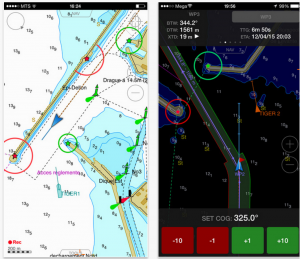

Additionally, it would be great to be able to drill into the bus load and see which devices are driving the load.Ĭlicking the device count takes you to the network summaryĪctisense-i’s third and final function gives a summary view of the devices on the network. The bus load information would also benefit from a historical graph view. Obviously, the test network the W2K-1 is monitoring is nowhere near that threshold. As network utilization creeps over 50 percent, the network’s performance will typically begin to degrade. NMEA 2000 networks have a bandwidth of 250 kilobits per second. Actisense-i NMEA 2000 network loadĪctisense-i also allows you to view the overall load on your NMEA 2000 bus. But, if you happened to meter your network when that load wasn’t on, you wouldn’t see the problem or be able to correlate the source.

If there were a problem, perhaps from voltage sag resulting from a large load on the batteries, it would be seen on the graph. The plot above shows the result of solar charging and varying loads on the battery bank serving this NMEA 2000 network. The historical graph of voltages allows you to see the voltages over time. I think this is really useful information. Clicking on the voltage tile brings up the historical voltage graph you see above. A NMEA 2000 network with inadequate voltage can lead to unpredictable operations. The initial rollout of Actisense-i provides three main functions. Actisense-i voltage detail with historical graph Clicking any of these three data tiles allows you to drill into greater detail on each measurement. You can see voltage, bus load, and the number of connected NMEA 2000 devices at a glance. I also recognize that these devices’ physical size and relatively low cost make it difficult to fit a dual-band radio in them.Ĭlicking the Actisense-i tile on the home page of the W2K-1 menu brings up the menu above. Although I frequently complain about 2.4ghz only marine products, I’ve never really had any troubles with the 2.4ghz band for the low traffic rates NMEA 2000 WiFi gateways typically push. I appreciate that the W2K-1 can connect as a client to an existing network while simultaneously serving as an access point to create its own network. In the case of the W2K-1 Actisense-i, a growing set of troubleshooting tools, joins the existing voyage data recording capabilities. The web server gives the manufacturers the ability to add some nice additional features. Nearly all of the NMEA 2000 to WiFi gateways have a built-in webserver, and the W2K-1 is no exception. It has a NMEA 2000 DeviceNet port, a 2.4ghz WiFi radio, and four status LEDs. The $250 W2K-1 is a small device, about the size of a pack of playing cards. How does Actisense-i stack up to other NMEA 2000 troubleshooting tools? I’ve spent some time with it and believe it provides useful insight into your network but leaves room for more. But now, Actisense has expanded the features of the W2K-1 to include their Actisense-i diagnostics functionality. The primary focus of the W2K-1 is making data from your NMEA 2000 network available via WiFi to mobile devices and laptop. Actisense’s W2K-1, like Actisense’s other products, is a well-made, straightforward product with a few extra features.


 0 kommentar(er)
0 kommentar(er)
